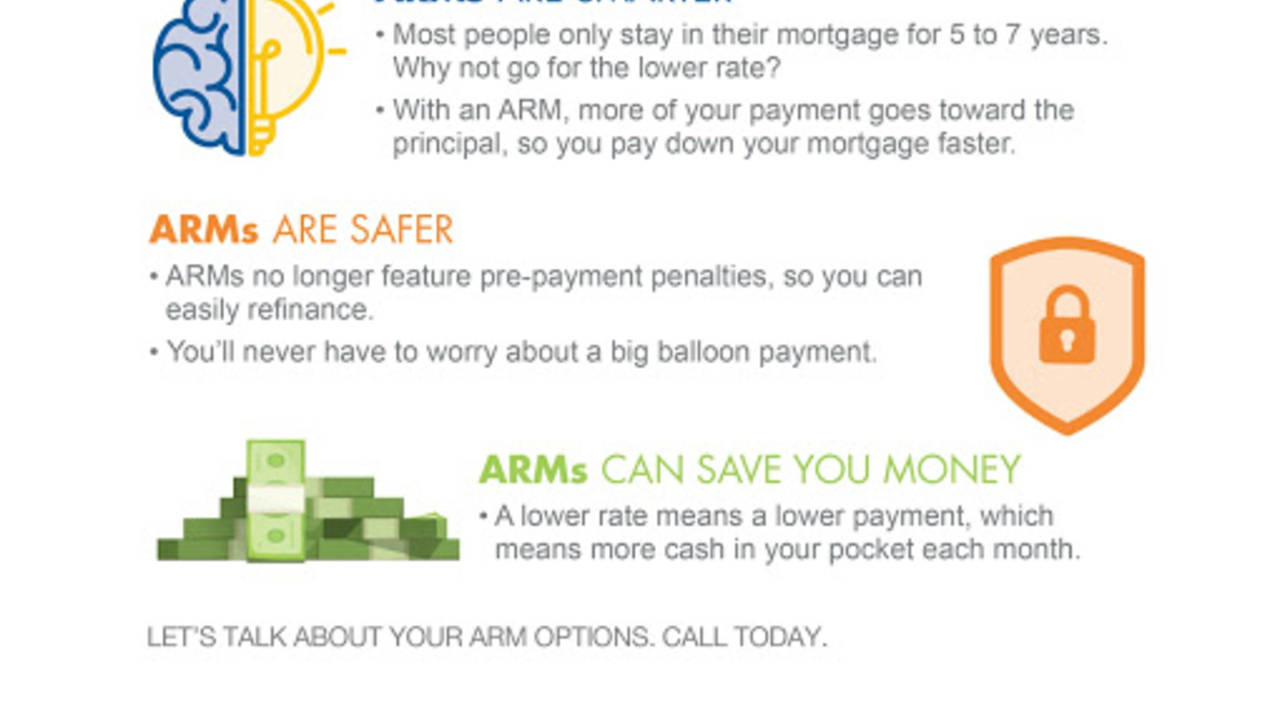Pamela Madore
Pamela Madore Mortgage
http://pamelamadoremortgage.com
Adjustable Rate Mortgages Are Back. Good or Bad?
The answer to that question is probably "it depends". What does it depend on? I think it depends on the reason you choose to get an ARM loan.
Let me take a minute first and explain how an adjustable rate mortgage works. Currently you will find that most ARMs are either a 5/1, 7/1, or 10/1 ARM. Let's use the 5/1 ARM as an example.
On a 5/1 ARM your interest rate is fixed for the first 5 years and then it adjusts every year after that for the life of the loan. There are limits on how much your loan can adjust called "caps". Your loan will have an "index" and a "margin". Common caps on a 5 year ARM might be 2/2/5. I will explain that in a minute.
The margin is a fixed number that you get at the beginning of your loan. A common margin might be 2.25.
The same source of "index" is used over the life of the loan. Unlike the margin, the index changes. A common index is the LIBOR as defined below.
LIBOR or ICE LIBOR (previously BBA LIBOR) is a benchmark rate that some of the world's leading banks charge each other for short-term loans. It stands for IntercontinentalExchange London Interbank Offered Rate and serves as the first step to calculating interest rates on various loans throughout the world.
When your interest rate adjusts after the 5 years, the current LIBOR index and your pre-set margin are added together for your new rate. However, the adjustment is limited to the "caps" you got when you originated the loan.
A 2/2/5 cap means that on the first adjustment period your rate can't increase more than 2%. The second "2" in the 2/2/5 example means that at each adjustment period (yearly in our example) can't adjust the interest rate more than 2% per year. The "5" in the 2/2/5 example means that the interest rate can never adjust more the 5% from your beginning rate.
As an example, let's say you chose a 5/1 ARM today and the starting interest rate is 3.5%. That rate will stay fixed for the first 5 years at 3.5%. After the 5 years your first adjustment happens. With a 2% cap that means that at the first adjustment period your rate could potentially go to 5.5%. Now let's say that worst case scenario happens and over the next few years interest rates continually rise. At the next adjustment your rate went to 7.5%.
On your next adjustment period (the 8th year) rates still continue to rise and your interest rate will adjust again. This time, however, you have reached the "lifetime cap" of your loan which is the "5" in the 2/2/5 example. Starting with a 3.5% interest rate your rate can never be higher than 8.5%. So your rate at this adjustment period would go to 8.5%.
There are 2 things to consider here. Remember that we said "worst case scenario". Let's say that interest rates at the end of 5 years are about the same or went down from when you took out your loan. When you add your new "index" to your fixed "margin" it may not equal 2% and may not adjust the full 2%. Since your margin is 2.25%, however, it is likely to adjust the full 2% on the first adjustment. It is more likely that this could happen after the first adjustment period.
The next thing to consider is that rates do continually go up and down. Let's say that after 8 years interest rates are at 10% (yes that does happen). You are capped at 8.5% so you are ahead of the game.
Since we don't have a crystal ball that will show us what interest rates will be over the next few years, it is wise to consider the "worst case scenario" when deciding whether an ARM is better or if a 15 or 30 year fixed rate is best.
Why choose an ARM over a fixed rate?
In our example above, when our start rate is 3.5% it is less than the 30 year fixed rate which may be say at 4.5%. You will start out with a lower payment and for the first 5 years the interest you pay in your payment each month is less.
Another reason to consider an ARM might be that you plan on being in your house less than 5 years (or 7 years or 10 years depending on which ARM you choose). It would be very smart to choose the ARM in this example.
During the market crash of 2007 or 2008 many people were harmed and even lost their homes because they had chosen an ARM for their mortgage. ARMs during those times were much riskier than the ARMs of today.
During that time many ARMs were 1 or 2 year ARMs. They started adjusting right away after the low "teaser rate". You could get an "interest only" ARM which meant that you only had to pay interest for a set time in order to keep your payment lower and then it adjusted with possibly only a lifetime cap in place.
An adjustable rate mortgage is, of course, riskier than a fixed rate mortgage. Banks and lenders are much more conservative now than before, however. They may be requiring higher credit scores and requiring more down payment. They also may not be offering the 1 or 2 year ARMs but instead only offering 5/1, 7/1, or 10/1 ARMs.
So are Adjustable Rate Mortgages good or bad? Again, I say "it depends". When choosing a mortgage be sure to determine which suits you best--a fixed rate or an adjustable rate. ARMs don't have to be scary if you go in with your eyes wide open and choose it for the right reason.
Pamela Madore
Pamela Madore Mortgage
3955 S. Soncy
Amarillo, TX 79119
http://pamelamadoremortgage.com
806-290-1920



Comments(0)